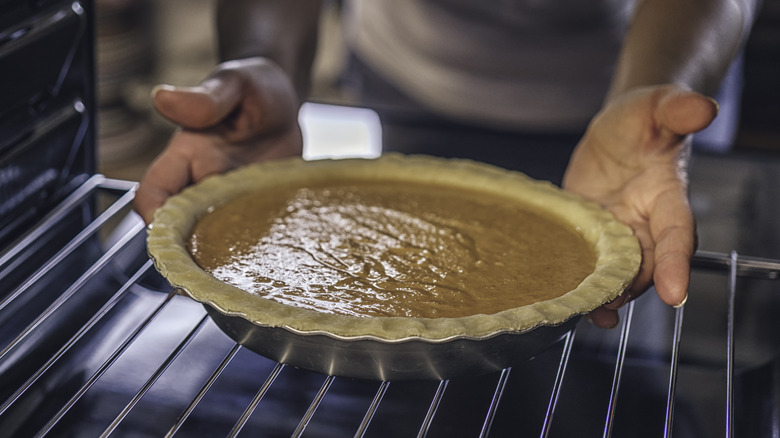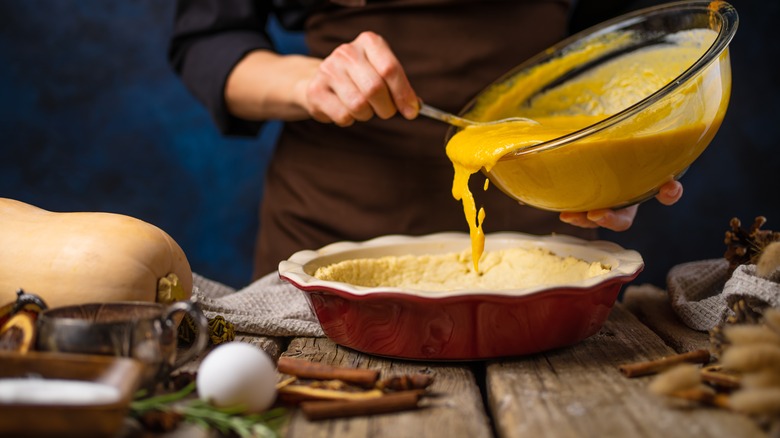High And Low Baking Is The Method That Prevents A Curdled Pie Filling
When you get a homemade pie right, it can be a rewarding and delicious experience for everyone. Unfortunately, custard-filled pies can be finicky once you pop them in the oven. Pumpkin pie is an American staple and perhaps the most popular custard pie out there, but when Thanksgiving comes around and it's time to actually bake one, you may end up with a curdled filling if you don't switch your oven from high to low heat.
Low and slow is always the best baking technique when making pies, but even if it sounds contradictory, many recipes instruct you to briefly bake your dessert at high temperatures first. For example, try heating your oven to around 400 degrees Fahrenheit, baking your pie for about 10 minutes so your crust can firmly set, then lowering the temp to 300 for the pie's remaining bake time.
Some bakers choose to put an already-filled pie into the oven before switching from high to low heat. Others, however, don't want to risk the common pie-making mistake of curdling the custard filling and will instead blind-bake the crust before lowering the oven temperature and, finally, adding the pie's filling. Either way, this method is all about ensuring the eggs in your custard give your pie the proper consistency.
Curdling occurs when the eggs in your filling overcook
Custard pies would be nothing without eggs — they're the thickening agent that gives any pumpkin pie recipe that creamy, melt-in-your-mouth texture. When you bake your pie at too high a temperature for too long, the eggs will overcook, turning a potentially light, fluffy filling into one that's chunky and uneven. This is why it's better to bake your pie at lower temperatures once the crust has set since eggs begin to solidify at 160 degrees Fahrenheit. The goal is for the eggs to coagulate slowly so your pie emerges from the oven evenly baked and perfectly jiggly in the center.
While the eggs in your custard-based pie won't benefit from an unnecessarily high oven temperature, the crust will. High temperatures swiftly melt the dough's fat, which creates steam and results in a perfectly flaky crust. Lowering the heat when you're ready to bake the filling won't just thicken the eggs more gently — it will also make your pie crust less likely to burn. Last but not least, give your pie a few hours to rest before serving so it cools to room temperature and fully sets.

